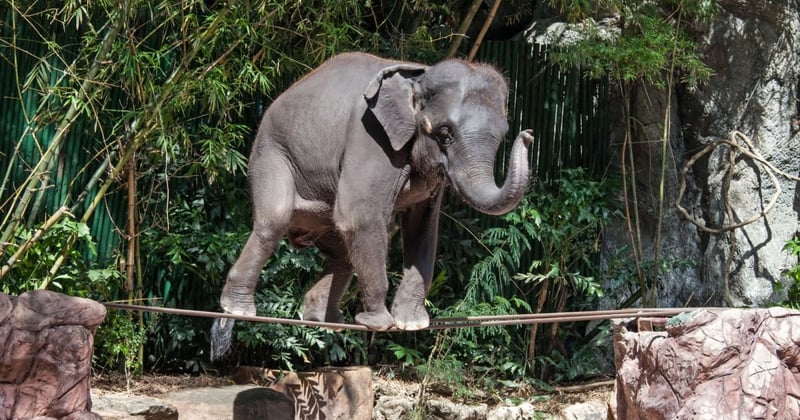
You may hear people describe elephants in captivity as "domesticated", especially people from elephant entertainment venues–but this word is misleading.
Elephants are not and have never been domesticated like cats or dogs.
These animals have gone through the process of "domestication" – a socio-biological process that happens over the course of many generations of human-guided breeding.
Most experts agree that to be domesticated, animals must have been selectively bred by humans for at least 12 generations, with offspring from each generation chosen for further breeding based on their desired traits – like strength, size, appearance, and behavior.
The instincts and even anatomy of domesticated animals are significantly different from their wild counterparts. They likely still display natural behaviors, but due to selective breeding, they are much easier to handle than wild animals of the same species.
It’s not possible for one individual wild animal to become domesticated within their lifetime.
Elephants are always wild
Throughout the 3,000-year history of humans using elephants, most elephants have been captured from the wild. A few may be first or second-generation captive-bred, but they are not bred selectively for the traits desirable by humans.
The fact that humans have been using elephants for a long time does not make them domesticated.
Elephants require brutal training to accept human contact. Even then, they retain their natural instincts which are meant for the wild.
The word "domesticated" suggests elephants have lost their wild instincts and have adapted successfully for a life lived with humans. But nothing could be further from the truth.
Why does this matter?
Calling elephants "domesticated" is not just inaccurate. It is also a misconception that leads visitors to think of them as like pets – and to find it more acceptable that they are chained up, confined to small spaces, and handled by mahouts and visitors.
And when visitors find these conditions okay, there is less pressure on the industry to change. It becomes harder to improve the welfare of captive elephants, and conservation work is hindered.
That’s not to say we aren’t trying. By continuing to spread this message, together we can shift the demand towards elephant-friendly tourism: seeing elephants in the wild or in genuine sanctuaries.
Elephant tourism is part of the wildlife trade. You can help put an end to this abuse by signing our petition urging the G20 to enact a global ban of the wildlife trade.